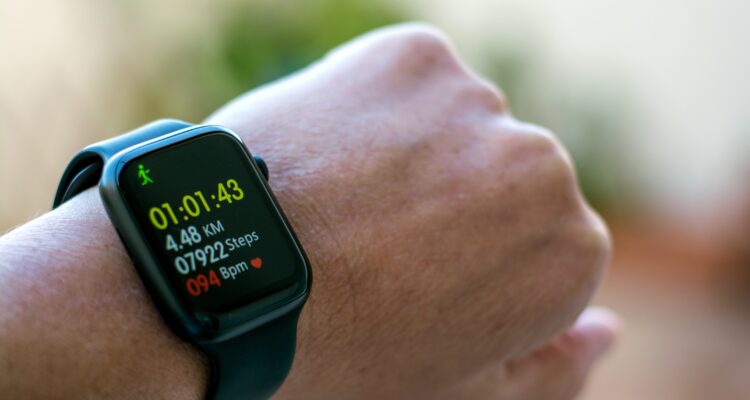Early diagnosis is also vital for effective treatment, particularly for COVID-19, where treatments are most effective when administered early.
By Pesach Benson, TPS
Physiological sensors in smartwatches can detect infectious diseases days before symptoms appear, potentially averting future pandemics, Israeli researchers said.
In a two-year study involving nearly 5,000 participants, researchers from Tel Aviv University found that the wearables could detect changes in vital signs 23 hours before the first COVID-19 symptom, 62 hours before symptoms of group A streptococcus (GAS), and 73 hours before influenza symptoms appeared.
Their findings also suggest that early detection via wearable technology can induce behavioral changes — such as reduced social contacts — at a critical stage when the disease is most infectious, thus potentially preventing widespread contagion.
“Infectious diseases and pandemics pose a great threat to humanity, and we must harness our scientific and technological abilities to prevent them,” said Prof. Dan Yamin, who led the study, which was recently published in the peer-reviewed Lancet Regional Health Europe.
“Previous studies have shown that during the recent pandemic about 40% of all transmissions occurred about a day before the first symptoms appeared. In other words, the person transmitting the disease was not yet aware that he/she was infected,” Yamin said.
Participants wore smartwatches that continuously monitored key physiological parameters, particularly focusing on pulse rate and heart rate variability (HRV) and answered daily health questionnaires.
The smartwatches recorded pulse rate and HRV at 15-second intervals, providing crucial data on heart and brain activity.
“When a person becomes ill, the immune system prioritizes fighting the disease, keeping the heart rate relatively steady and reducing HRV. These changes indicate physical stress,” Yamin explained.
Participants also had home test kits for COVID-19, influenza, and GAS, which they used at their discretion.
Over two years, the researchers collected 800,000 questionnaires and compared this data with the smartwatch readings, documenting 490 influenza cases, 2,206 COVID-19 cases, and 320 GAS cases.
The findings identified three critical points following exposure to an infectious disease — anomalies in heart rate, symptoms being noticed, and the testing that ultimately diagnosed the infection.
The researchers found that the first physiological anomaly in heart rate measures appeared 96 hours after exposure to COVID-19, while the first symptom was noticed by the individual 130 hours after exposure.
However, the testing that ultimately diagnosed the disease occurred about 168 hours after exposure.
These intervals were even shorter for influenza (24 hours) and GAS (60 hours).
Despite early symptom detection, participants tended to delay testing—53 hours for COVID-19, 39 hours for influenza, and 38 hours for GAS, resulting in prolonged periods of unintentional disease spread.
“We found that on average, people performed the test and changed their behavior when the disease was already past its peak, and they were much less likely to infect others,” explained Prof. Erez Shmueli.
“The delay between digital diagnosis and testing – 64 hours in the case of COVID-19, 68 hours for influenza, and 58 hours for GAS – is thus extremely crucial.”
Yamin stressed that digital diagnosis can significantly reduce the spread of infectious diseases at the population level by prompting earlier changes in social behavior.
“This can prevent the next pandemic by reducing the basic reproduction number (R0 value) below 1.0, meaning each infected individual transmits the disease to less than one other person, causing the disease to die out.”
Early diagnosis is also vital for effective treatment, particularly for COVID-19, where treatments are most effective when administered early.
“Our new method using wearable sensors for early detection can potentially reduce epidemic threats to a minimum,” Yamin said.





